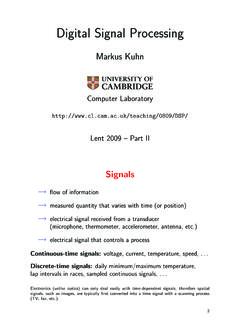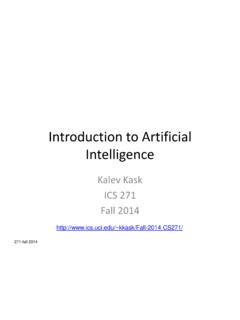Transcription of Learning Calibrated Medical Image Segmentation via Multi ...
1 Learning Calibrated Medical Image Segmentationvia Multi -rater Agreement ModelingWei Ji1,2, Shuang Yu1B, Junde Wu1, Kai Ma1, Cheng Bian1, Qi Bi1 Jingjing Li2, Hanruo Liu3, Li Cheng2B, Yefeng Zheng11 Tencent Jarvis Lab, Shenzhen, China2 University of Alberta, Canada3 Beijing Tongren Hospital, Capital Medical University, Beijing, China{wji3, kylekma, Medical Image analysis, it is typical to collect multipleannotations, each from a different clinical expert or rater,in the expectation that possible diagnostic errors could bemitigated. Meanwhile, from the computer vision practi-tioner viewpoint, it has been a common practice to adoptthe ground-truth labels obtained via either the majority-vote or simply one annotation from a preferred rater.}
2 Thisprocess, however, tends to overlook the rich informationof agreement or disagreement ingrained in the raw Multi -rater annotations. To address this issue, we propose to ex-plicitly model the Multi -rater (dis-)agreement, dubbed MR-Net, which has two main contributions. First, an expertise-aware inferring module or EIM is devised to embed theexpertise level of individual raters as prior knowledge, toform high-level semantic features. Second, our approach iscapable of reconstructing Multi -rater gradings from coarsepredictions, with the Multi -rater (dis-)agreement cues beingfurther exploited to improve the Segmentation our knowledge, our work is the first in producing cali-brated predictions under different expertise levels for med-ical Image Segmentation .
3 Extensive empirical experimentsare conducted across five Medical Segmentation tasks of di-verse imaging modalities. In these experiments, superiorperformance of our MRNet is observed comparing to thestate-of-the-arts, indicating the effectiveness and applica-bility of our MRNet toward a wide range of Medical seg-mentation code is publicly IntroductionAccurate anatomy and lesion Segmentation is crucial inclinical assessment of various diseases, including for exam-Wei Ji, Shuang Yu and Junde Wu have equal contributions. Wei Jicontributes to this work during internship at Tencent Jarvis Yu and Li Cheng are the corresponding imageRater2 Optic cup annotationsOptic disc annotationsRater5 Rater1 Rater6 Rater3 Rater4 GradeFigure :an exemplar Medical Image grading scenario con-ducted by multiple raters with different expertise :visualization of optic cup and disc annotations of the above glaucoma [28,36,43], prostate diseases [30,52], andbrain tumors [11,17,44].
4 It has been increasingly pop-ular to develop automated Segmentation systems, to facil-itate a reliable reference for the quantification of diseaseprogression, which is especially accelerated by the excit-ing breakthroughs of deep convolutional neural networks(CNNs) [7,20,34,35,49,55,56,59] over the past from labelling natural images, Medical imagesare often independently annotated bya group of experts orraters, to mitigate the subjective bias of a particular raterdue to factors such as the level of expertise, or possible neg-ligence of subtle symptoms [13,39,23,28]. Inter-observervariability, as frequently reported by relevant research inthe clinical field, often leads to challenges in segmentinghighly uncertain regions [3,23,37].
5 A rep-resentative illustration of the Multi -rater grading process in12341annotating optic cups and discs from fundus images, withnotable uncertainties or disputed regions presented amonggraders. It is thus necessary for automated systems to con-sider a proper Segmentation strategy that reflects the un-derlying (dis-)agreement among multiple experts. Existingworks typically require unique ground-truth annotations,each pairing with one of the input images to train the deeplearning models. It is a common practice to take majorityvote, STAPLE [50] or other label fusion strategies to obtainthe ground-truth labels [5,29,30,34,57,59]. Being sim-ple and easy to implement, this strategy, however, comesat the cost of ignoring altogether the underlying uncertaintyinformation among multiple experts.
6 Very recently, severalefforts start to explore the influence of Multi -rater labels bylabel sampling [19,24] or Multi -head [16] strategies. Itis reported that models trained with Multi -rater labels arebetter Calibrated than those with the typical ground-truthlabel via, majority vote, which are prone to be over-confident [19,24].Meanwhile, there still lacks a principled approach to in-corporate in training the rich uncertainty information frommultiple raters. Specifically, we focus on the followingquestions: 1) how to integrate varied expertise-level, orex-pertness, of individual raters into the network architecture?2) how to exploit the uncertainty information among differ-ent experts to produce probability maps that better reflectthe underlying graders (dis-)agreement?
7 This inspires us topropose a Multi -rater agreement modeling framework, MR-Net. To our knowledge, it is the first in explicitly addressingthe above-mentioned questions. Our framework has the fol-lowing three main contributions: The notion ofexpertnessis explicitly introduced asprior knowledge about the expertise levels of the in-volved Multi -raters. It is embedded in the high-levelsemantic features through the proposed Expertise-aware Inferring Module (EIM), enabling the represen-tation capability to accommodate the Multi -rater set-tings. A Multi -rater Reconstruction Module (MRM) is de-signed to reconstruct the raw Multi -rater gradings fromthe the expertness prior and the soft prediction of themodel. This enables the estimation of an uncertaintymap that reflects the inter-rater variability, by exploit-ing the intrinsic correlations between the fused soft la-bel and the raw Multi -rater annotations.
8 To better utilize the rich cues among Multi -rater (dis-)agreements, we further incorporate in our frameworka Multi -rater Perception Module (MPM), which em-pirically leads to noticeable performance experiments are performed on five different med-ical Image Segmentation tasks of diverse Image modali-ties, including color fundus imaging, computed tomogra-phy (CT), and magnetic resonance imaging (MRI). Overall,our MRNet framework consistently outperforms the state-of-the-art methods as well as existing Multi -rater addition, our MRNet runs in real-time (29 frame per sec-ond) at inference stage, making it practically appealing formany real-world Related WorkMedical Image the advancement ofCNNs, an increasing number of deep Learning architectureshave been proposed for Medical Segmentation tasks such asoptic disc/cup Segmentation [60,29,57,12] in fundus im-ages, prostate Segmentation [21,30,48] and brain tumorsegmentation [4,6].
9 These methods have obtained superiorperformance comparing to traditional feature engineeringbased methods [8,9,10]. Taking optic disc/cup segmenta-tion as an example, Fu et al. [12] proposed a U-shaped net-work with Multi -scale supervision strategy for polar trans-formed fundus images to produce the Segmentation et al. [15] integrated dense atrous convolution blockand residual Multi -kernel pooling to U-Net structure to cap-ture high-level features with context information. Zhanget al. [58] presented an attention guided network usingguided filter to preserve the structural information and re-duce the negative influence of background. Meanwhile, Liet al. [29] integrated detection and Multi -class segmenta-tion into a unified architecture for segmenting the optic cupand disc regions.
10 Wang et al. [45] attempted to utilize thedesigned domain adaptation frameworks for fundus imagesegmentation, in order to increase the cross-domain predic-tion common practice adopted by the above-mentionedmethods, as well as most existing CNNs based learningmethods, is to construct training examples by retainingunique ground-truth labels for each of the training this manner, the valuable Multi -rater labels obtained inthe grading procedure with inter-rater variability are unfor-tunately not recently, the problems ofthe Multi -rater labels and inter-rater variability start to at-tract research attentions [16,19,2,24,42,54]. Jensen et al.[19] adopted a label sampling strategy for skin disease clas-sification, by sampling labels randomly from the Multi -raterlabeling pool during each training iteration.
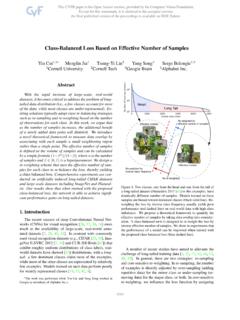
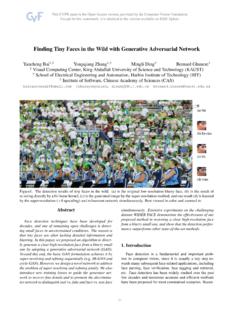

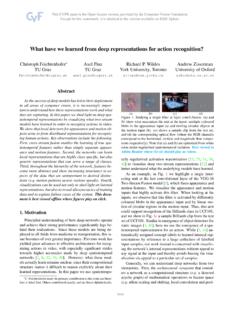
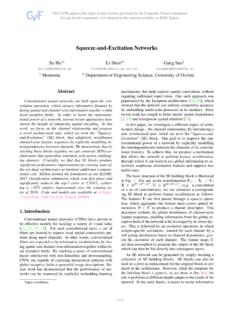
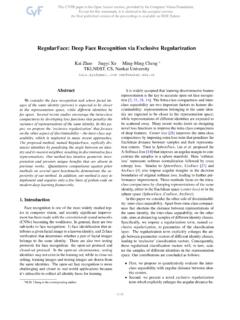
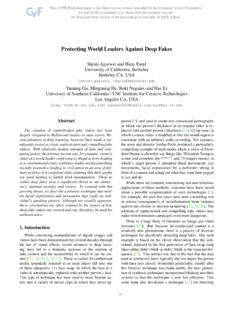
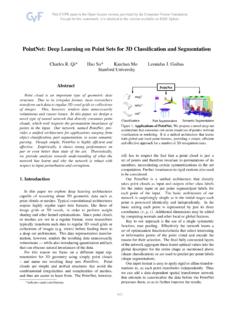
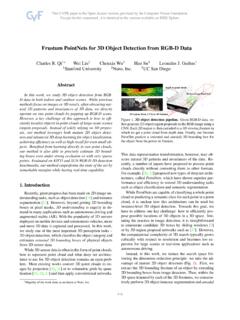
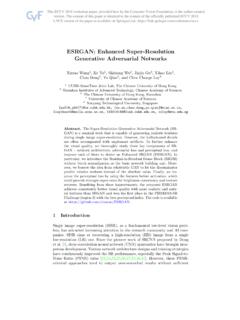
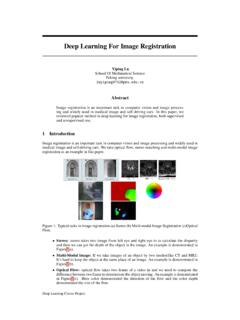


![arXiv:2105.05633v1 [cs.CV] 12 May 2021](/cache/preview/6/1/2/8/2/0/d/8/thumb-612820d8df3e5b009babe51cf11c5c25.jpg)
